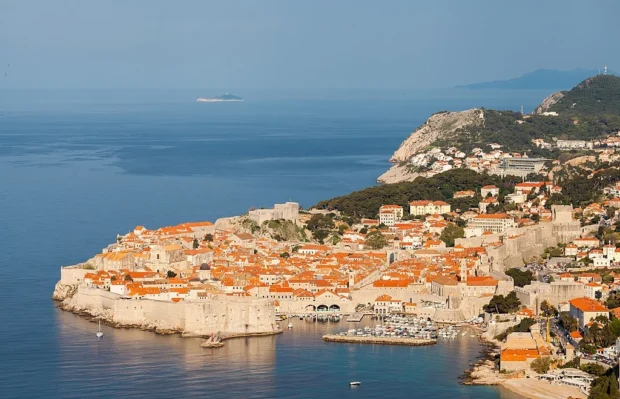If you’re planning a trip to Croatia’s stunning Adriatic coast, the name Dubrovnik Old Town will likely catch your eye. Nestled between ancient city walls, cobbled streets, and red-tiled roofs, this historic core invites visitors to step into a world where medieval architecture and vibrant local life blend seamlessly. Known for its well-preserved city walls, quaint squares, and fascinating museums, Dubrovnik Old Town offers a rich experience for those intrigued by coastal heritage sites, medieval architecture, and cultural landscapes. From nearby cozy accommodations to local eateries serving iconic dishes like fresh seafood and black risotto, the area provides an authentic taste of Dalmatian life. Getting here from Dubrovnik’s airport or bus station is straightforward with several transport options available. Let’s walk together through this timeless Croatian jewel.
Table of Contents
Finding Your Way Into the Heart of the Old Town
Getting to Dubrovnik Old Town is easier than you might think. The Old Town is located on the southern edge of Dubrovnik’s city center, right by the Adriatic Sea. If you arrive by plane at Dubrovnik Airport, about 20 kilometers away, you can take a shuttle bus, taxi, or rental car that will bring you directly to the Pile Gate entrance of the Old Town. From the bus station in the city center, a short walk of around 15 minutes along the scenic harbor leads you to the same iconic gate.
Some visitors choose to arrive by cruise ship or ferry, docking near the Old Town port. From here, it’s just a gentle stroll up to the main squares and historic streets. If you prefer public transport, local buses run frequently between the surrounding neighborhoods and the city center, though the Old Town itself is pedestrian-only to preserve its medieval charm.
Treading the Walkways That Tell Stories
One of the most famous features of Dubrovnik Old Town is its impressive city walls. These massive fortifications, built between the 12th and 17th centuries, offer panoramic views of the Adriatic Sea and the terracotta rooftops below. Walking the walls is a must-do; it’s like tracing the footsteps of medieval guards who once protected the city from invaders.
Besides the walls, the Old Town is full of architectural marvels. The Rector’s Palace, once the seat of government, now functions as a museum showcasing Dubrovnik’s rich history. On Stradun, the main street paved with smooth limestone, you’ll find baroque churches, charming shops, and lively cafés. A visit to the Franciscan Monastery reveals one of Europe’s oldest pharmacies, continuously operating since 1317. These places whisper tales of Dubrovnik’s past as a proud maritime republic, once a key player in the historic trade routes of the Adriatic.
If you admire medieval walls, you might like to discover Porto’s vibrant neighborhoods and unique architecture in Porto Portugal.
For a contrasting yet equally charming medieval destination, Riga Old Town offers cobbled streets and unique stories worth adding to your travels.
Unearthing Hidden Corners and Quirky Details
While many tourists flock to the main squares, keen eyes can spot lesser-known treasures like the Church of St. Blaise, dedicated to the city’s patron saint. Legend says that St. Blaise once warned the citizens of enemy attacks, saving Dubrovnik from disaster. Another curious sight is the Onofrio Fountain-one of several water sources built during the Ottoman threat-which still provides fresh spring water to visitors.
Timing Your Visit for the Best Experience
Choosing when to visit Dubrovnik Old Town can make all the difference. Summer months, from June to August, attract many visitors due to the warm weather and festivals. However, the Old Town can become quite crowded, especially around midday. For a quieter experience, early mornings or late afternoons during the shoulder seasons of spring and autumn are ideal. The weather is still pleasant, and the golden light during these hours makes the stone walls glow warmly.
Weekdays tend to be less busy than weekends, allowing more space to appreciate the details of each square and alley. If you enjoy cultural events, check local calendars for concerts or traditional celebrations held within the city walls, which add a lively, authentic atmosphere to your visit.
Reservations and Guided Tours: What You Need to Know
Most areas of Dubrovnik Old Town can be explored without a ticket, but some landmarks and the city walls require an entrance fee. Purchasing tickets in advance is recommended, especially during peak seasons, to avoid long queues. Many visitors opt for guided walking tours which provide fascinating insights into the city’s medieval past and cultural heritage.
There are also specialized tours focusing on particular interests such as religious monuments, medieval architecture, or culinary heritage. For instance, a food tour might include tastings of traditional Dalmatian dishes in local konobas, while a heritage museum tour dives deep into Dubrovnik’s maritime history and craftsmanship traditions.
Online booking is often available on official websites, allowing you to secure your spot. Consider visiting the Dubrovnik Tourist Board for up-to-date information on tickets, events, and guided tours.
Staying Close: Accommodation and Local Flavors
If you want the full Old Town experience, staying nearby is a great choice. The area around the Old Town offers charming guesthouses, boutique inns, and apartments that place you within walking distance of main attractions. Waking up to the sound of church bells and the salty breeze from the sea is a unique pleasure found here.
The food scene in and around Old Town is a delightful mix of traditional and modern. Try freshly caught Adriatic fish grilled with local herbs or indulge in black risotto made with cuttlefish ink, a classic Dalmatian specialty. Small eateries tucked away in narrow alleys often provide the most authentic meals, where recipes have been passed down through generations.
Getting Around Within and Near the Old Town
Once inside the Old Town, the best way to move around is on foot. The streets are narrow and mostly pedestrianized, preserving the medieval atmosphere. For journeys outside the walls, local buses connect the Old Town with nearby beaches, the airport shuttle stop, and other parts of Dubrovnik.
If you plan to explore the wider Dalmatian coast, consider renting a bike or scooter for flexible travel. Just remember that some roads near the Old Town can be steep and cobbled, so comfortable footwear is essential.
Living the Past Along the Adriatic Coast
Walking through Dubrovnik Old Town is like stepping into a living museum where the past and present coexist beautifully. The city’s history as a powerful maritime republic, its architectural treasures, and its vibrant street life create a unique mosaic that charms every visitor. We found ourselves lingering in quiet corners, imagining markets filled with merchants trading ceramics and textiles, while the scent of olive oil and fresh bread fills the air.
For a broader view on where to stay and how to enjoy the city’s culture, check out our guide on Plan Your Stay in Dubrovnik.
Whether you’re tracing the route of ancient trade or savoring a slow meal watching the sunset over the old harbor, Dubrovnik Old Town invites you to pause and appreciate the layers of time etched into its stones. It’s a place where every alleyway holds a story, and every stone wall echoes with centuries of resilience and culture.

Eastern Europe travel specialist uncovering hidden gems from the Baltics to the Balkans.
- Casco viejo de Dubrovnik, Croacia, 2014-04-14, DD 07 by Diego Delso on Wikimedia Commons – cc by-sa 3.0
